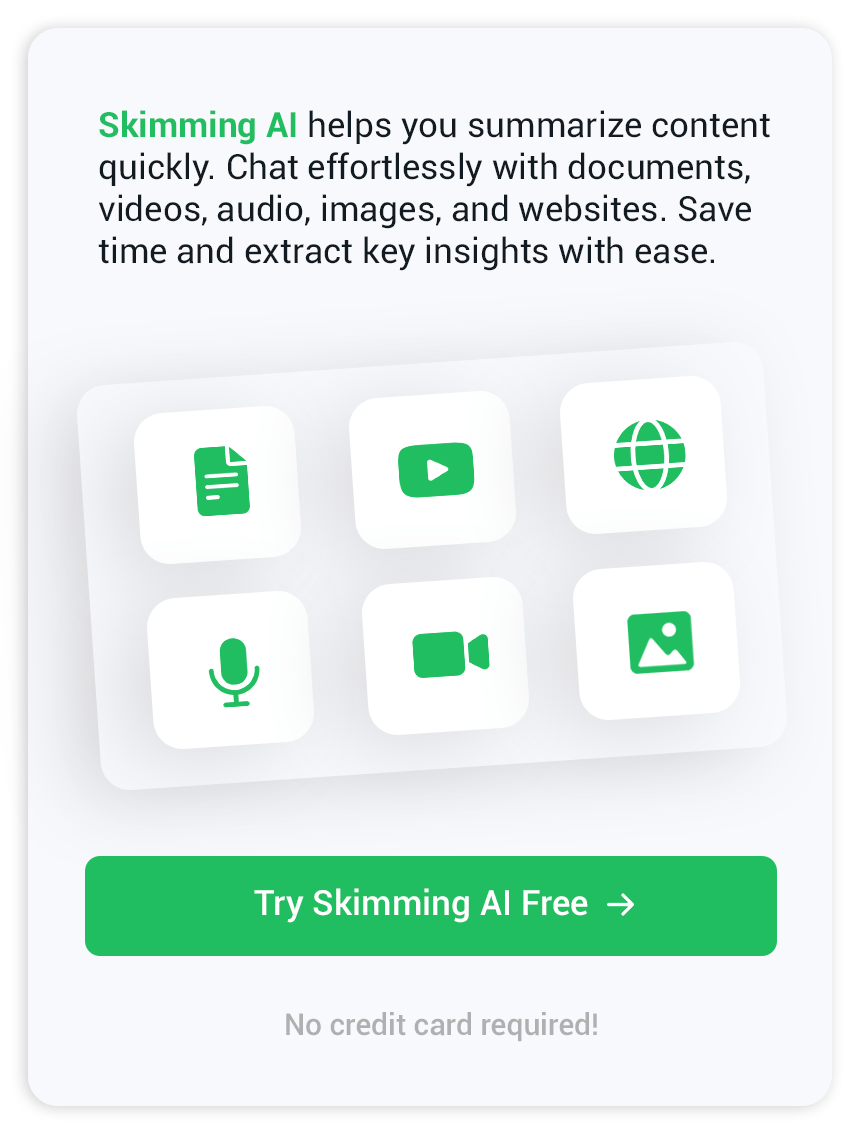Book Summary AI: Faster Reading, Deeper Understanding
Why Readers Turn to AI for Book Summaries
The average professional juggles e-mails, social feeds, and endless to-read lists. Carving out several evenings for a four-hundred-page book can feel impossible. Book summary AI steps in as a reading assistant that condenses full texts into bite-sized takeaways, letting people absorb core ideas on a commute or coffee break. Tools built on large language models recognise narrative arcs, arguments, and data points, then reshape them into clear prose or bullet notes. The result is more books finished, more ideas circulating, and less guilt about untouched shelves.
How Book Summary AI Works
Language models map structure before they shorten
Transformer-based models scan the complete text, identify chapters, and tag recurring themes. Named entity recognition spots characters, places, and data. Topic modelling ranks which concepts matter most to the author.
Compression without losing nuance
Instead of chopping at random, the model rewrites paragraphs in plain language, preserves author tone cues, and inserts transitions so that the finished summary still flows smoothly. When the original title is academic or literary, passages are simplified only where needed, leaving vital quotations intact.
Personalisation on demand
Many platforms invite a short prompt, such as “Focus on leadership lessons” or “Highlight Psychological Studies.” The engine reranks sentences and rewrites examples, giving every reader a tailored draft.
Benefits and Limitations
What you gain
- Speed – A chapter can become a one-page digest in seconds; full books appear in minutes.
- Personalised depth – Adjustable length sliders hand control back to the reader.
- Language flexibility – Instant translations mean a Spanish learner can request an English classic in Spanish notes.
- Searchability – Summaries index every paragraph, so later queries like “quote about resilience” surface within moments.
Where caution helps
- Context gaps – Subtle irony or poetic devices may flatten out.
- Intellectual property – Uploading a commercial e-book can violate license terms.
- Authorial intent – A brief digest might downplay the emotional pacing that gives memoirs their impact.
- Reading the source text remains the gold standard when nuance, voice, and atmosphere matter.
Leading AI Tools for Book Summaries
Skimming AI – Instant highlights and mind-friendly layout
Skimming AI book summarizer offers drag-and-drop uploads, headline bullet points, and a side-by-side scroll of the original versus the digest. The interface adds a visual map that links themes, making complex nonfiction easier to revisit later.
NoteGPT
NoteGPT converts every completed digest into an interactive mind map and supports EPUB, MOBI, PDF, and TXT formats.
Summarist.ai
With more than twenty million summaries generated, Summarist.ai houses a public library of pre-made digests across science, history, and self-help.
MyMap.ai
MyMap.ai leans into collaboration. Over three million users—from universities to tech giants—co-edit visual mind maps, annotate paragraphs, and export to PNG for presentations
Taskade
Taskade integrates its AI book summarizer into a productivity workspace, enabling teams to convert a digest into project tasks or brainstorming boards.
Choosing the Right AI Book Summarizer
Content scope
If you primarily read business titles, a library-driven platform like Summarist.ai may already host the books you need. Researchers dealing with niche PDFs should pick a tool that accepts file uploads.
Output format
Bullet lists work for memorization; narrative paragraphs fit book club discussions. Select engines that let you toggle between styles.
Integration and price
Power users may want a browser extension or API access so summaries flow into note-taking apps. Check daily credit limits before committing.
Best Practices for Using Book Summary AI
Pair digests with sampling
Read a chapter or two of the original first. It grounds your grasp of the author’s tone and helps you judge summary accuracy.
Verify data
If the book includes studies or statistics, click cited sources or search the original footnotes. AI condenses but does not always contextualise numbers.
Use AI to plan further reading.
Feed several book summaries into one prompt asking for overlaps. The model can propose a custom syllabus that deepens your understanding of a theme in incremental steps, allowing you to explore the topic in greater detail.
Future Directions
Interactive summaries
Voice assistants already answer follow-up questions about a digest. Expect chat modes that let readers ask, “Show me all examples of cognitive bias,” and receive instant pull quotes.
Multi-modal reading
Platforms are experimenting with adding images, charts, and short audio snippets that reinforce the digest. A single tool may soon switch between text, podcast-style recaps, and slide decks without file exports.
Final Thoughts
Book summary AI keeps pace with modern schedules while still honouring authors’ ideas. When you are ready to tackle a dense tome, consider running a sample chapter through your preferred summarizer first. You will start the full read with clear landmarks and finish with richer retention.


